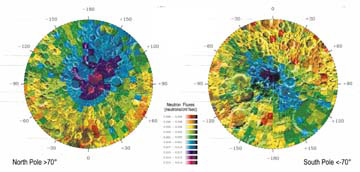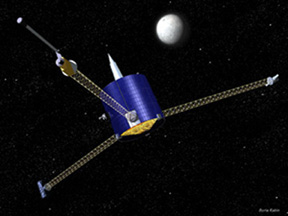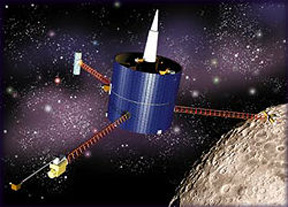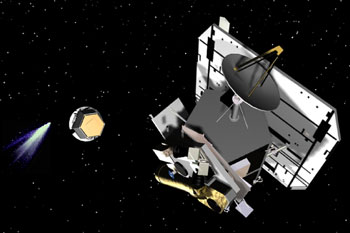
NASA
Related links:
Lunar Prospector Makes Exciting Findings
News story originally written on September 4, 1998
The Lunar Prospector spacecraft reached the Moon in January 1998. Data sent back recently from the Prospector is revolutionizing what scientists know about our closest neighbor, the Moon.One exciting find is that the Moon may contain up to six billion metric tons of water ice at the poles. This is ten times as much as was first predicted from original Prospector data. Scientists haven't found the water ice directly, of course. They have found considerable traces of hydrogen at the poles of the Moon. This hydrogen could indicate something else like hydrogen from the solar wind trapped in rocks. But this and other possibilities are highly unlikely. Generally in our solar system, hydrogen found in soil indicates the presence of water. And the presence of water on the Moon would make human colonization all the easier!
Data that has just been released from Prospector also shows that the Moon likely has a small, iron-rich core approximately 186 miles in diameter. This core is probably producing the weak magnetic field that the Prospector has been measuring.
"The Apollo program gave us an excellent picture of the Moon's basic structure and its regional composition, along with some hints about its origin and evolution. Lunar Prospector is now expanding that knowledge into a global perspective," said Dr. Carl Pilcher, science director for Solar System exploration in NASA's Office of Space Science, Washington, DC.













